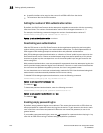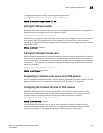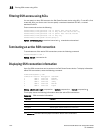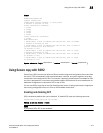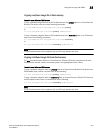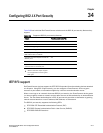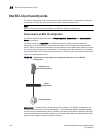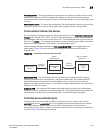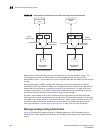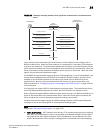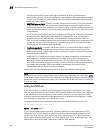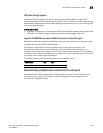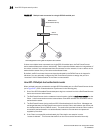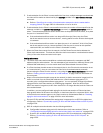
1218 PowerConnect B-Series FCX Configuration Guide
53-1002266-01
How 802.1X port security works
34
How 802.1X port security works
This section explains the basic concepts behind 802.1X port security, including device roles, how
the devices communicate, and the procedure used for authenticating clients.
NOTE
802.1X Port Security cannot be configured on MAC Port Security-enabled ports.
Device roles in an 802.1X configuration
The 802.1X standard defines the roles of Client/Supplicant, Authenticator, and Authentication
Server in a network.
The Client (known as a Supplicant in the 802.1X standard) provides username/password
information to the Authenticator. The Authenticator sends this information to the Authentication
Server. Based on the Client's information, the Authentication Server determines whether the Client
can use services provided by the Authenticator. The Authentication Server passes this information
to the Authenticator, which then provides services to the Client, based on the authentication result.
Figure 153 illustrates these roles.
FIGURE 153 Authenticator, client/supplicant, and authentication server in an 802.1X
configuration
Authenticator – The device that controls access to the network. In an 802.1X configuration, the
PowerConnect device serves as the Authenticator. The Authenticator passes messages between
the Client and the Authentication Server. Based on the identity information supplied by the Client,
and the authentication information supplied by the Authentication Server, the Authenticator either
grants or does not grant network access to the Client.
Client/Supplicant
RADIUS Server
(Authentication Server)
Switch
(Authenticator)



